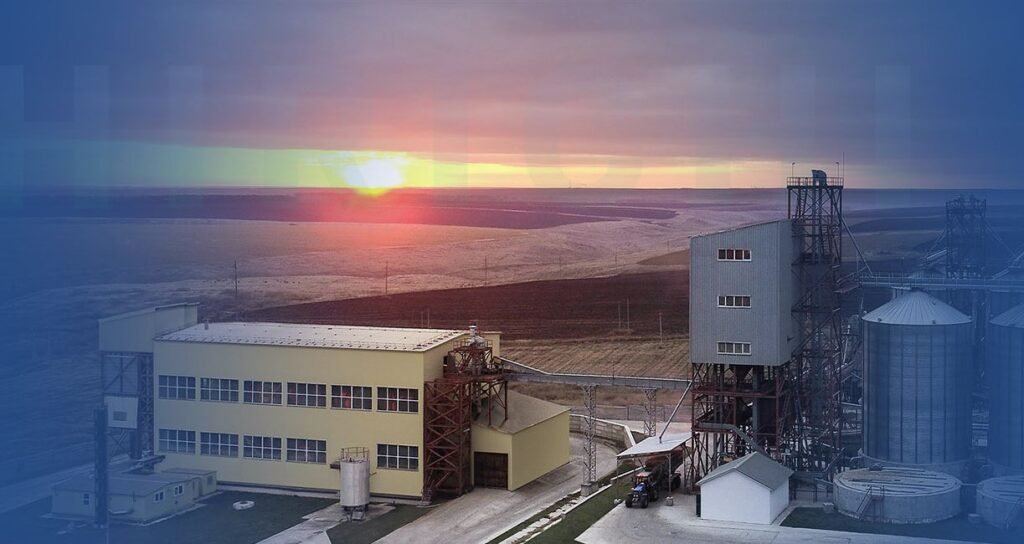A 15 tons per hour (t/h) hen feed plant represents a significant investment in the animal feed industry. Understanding the cost allocation for the various equipment involved is crucial for budgeting, financial planning, and ensuring the project’s feasibility. This article explores the main cost components associated with setting up and operating a 15t/h hen feed plant, breaking down the equipment costs and their impact on the overall investment.
Key Equipment Components
The primary equipment required for a 15t/h hen feed plant includes:
- Raw Material Handling Equipment
- Grinding Equipment
- Mixing Equipment
- Pelleting Equipment
- Cooling and Drying Equipment
- Screening and Grading Equipment
- Packaging Equipment
- Auxiliary Equipment
Cost Allocation Breakdown
- Raw Material Handling Equipment
Raw material handling equipment is essential for the initial stages of feed production, including receiving, cleaning, and conveying raw materials.
- Components: Silos, storage bins, pre-cleaners, bucket elevators, and conveyors.
- Cost Allocation: Typically, raw material handling equipment accounts for 10-15% of the total equipment cost.
Example:
- Silos and storage bins: $50,000
- Pre-cleaners: $20,000
- Bucket elevators and conveyors: $30,000
- Total: $100,000
- Grinding Equipment
Grinding equipment is used to reduce the size of raw materials, making them suitable for mixing and pelleting.
- Components: Hammer mills or pulverizers.
- Cost Allocation: Grinding equipment usually represents 10-15% of the total equipment cost.
Example:
- Hammer mills: $80,000
- Total: $80,000
- Mixing Equipment
Mixing equipment ensures that the ground raw materials are uniformly blended to create a consistent feed mixture.
- Components: Horizontal or vertical mixers.
- Cost Allocation: Mixing equipment typically accounts for 10-15% of the total equipment cost.
Example:
- Horizontal mixers: $90,000
- Total: $90,000
- Pelleting Equipment
Pelleting equipment is the core of the feed production line, converting the mixed feed into pellets.
- Components: Pellet machines, conditioners, and pellet coolers.
- Cost Allocation: Pelleting equipment generally constitutes 25-30% of the total equipment cost.
Example:
- Pellet mills: $150,000
- Conditioners: $30,000
- Pellet coolers: $50,000
- Total: $230,000
- Cooling and Drying Equipment
After pelleting, the feed pellets need to be cooled and dried to ensure they are stable and ready for storage or packaging.
- Components: Counter-flow coolers, drying systems.
- Cost Allocation: Cooling and drying equipment typically account for 10-15% of the total equipment cost.
Example:
- Counter-flow coolers: $50,000
- Drying systems: $40,000
- Total: $90,000
- Screening and Grading Equipment
Screening and grading equipment is used to separate fines and ensure that the feed pellets meet the desired size specifications.
- Components: Rotary grading sieves, vibrating screens.
- Cost Allocation: Screening and grading equipment usually represents 5-10% of the total equipment cost.
Example:
- Rotary grading sieves: $30,000
- Vibrating screens: $20,000
- Total: $50,000
- Packaging Equipment
Packaging equipment is essential for preparing the finished feed pellets for storage, transportation, and sale.
- Components: Bagging machines, palletizers.
- Cost Allocation: Packaging equipment typically accounts for 5-10% of the total equipment cost.
Example:
- Bagging machines: $40,000
- Palletizers: $20,000
- Total: $60,000
- Auxiliary Equipment
Auxiliary equipment includes various supporting systems that ensure the smooth operation of the feed mill.
- Components: Dust collection systems, boilers for steam generation, electrical control systems.
- Cost Allocation: Auxiliary equipment generally constitutes 10-15% of the total equipment cost.
Example:
- Dust collection systems: $30,000
- Boilers: $50,000
- Electrical control systems: $40,000
- Total: $120,000
Total Equipment Cost Allocation
Summarizing the cost allocation for all the equipment components, we get:
- Raw Material Handling Equipment: $100,000
- Grinding Equipment: $80,000
- Mixing Equipment: $90,000
- Pelleting Equipment: $230,000
- Cooling and Drying Equipment: $90,000
- Screening and Grading Equipment: $50,000
- Packaging Equipment: $60,000
- Auxiliary Equipment: $120,000
Total Equipment Cost: $820,000
Impact on Overall Investment
The total equipment cost for a 15t/h hen feed plant is a significant portion of the overall investment. Typically, equipment costs account for 50-60% of the total project investment. Other costs include:
- Building and Infrastructure: Construction or renovation of the facility, including foundations, electrical installations, plumbing, and ventilation systems. Estimated cost: $300,000 – $500,000.
- Land Acquisition: Purchasing or leasing land for the feed mill. Estimated cost: $100,000 – $200,000.
- Installation and Commissioning: Costs associated with installing and commissioning the equipment. Estimated cost: $100,000 – $150,000.
- Working Capital: Funds required for initial operations, including raw materials, labor, and utilities. Estimated cost: $200,000 – $300,000.
- Permits and Licenses: Regulatory compliance costs, including permits and licenses. Estimated cost: $50,000 – $100,000.
- Consulting and Project Management: Fees for consulting services and project management. Estimated cost: $50,000 – $100,000.
Total Project Investment: $1,620,000 – $2,170,000
Conclusion
The equipment cost allocation for a 15t/h hen feed plant is a critical component of the overall investment. By understanding the cost distribution across various equipment categories, complete feed mill plant operators can better plan their budgets and ensure the project’s financial feasibility. Effective cost management, combined with strategic planning and efficient operations, can lead to a successful and profitable feed mill project.

